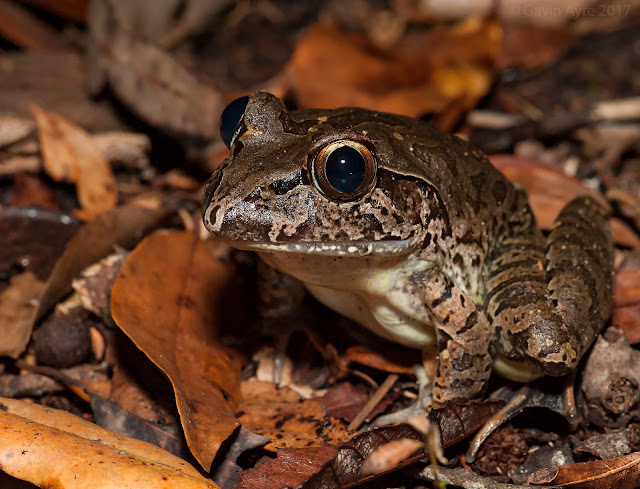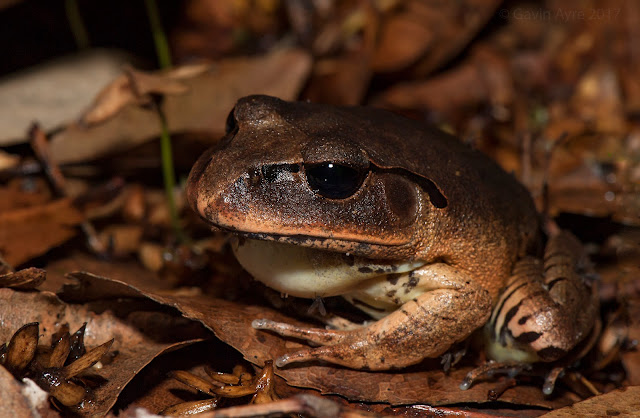 |
| Male Lesueur's tree frog, Watagan state forest, 11th February 2017 |
Lesueur's tree frogs are quite a common species throughout the Hunter Valley, and easily found on the banks of rocky streams in wetter forests. They are easily found as their eye-shine is a give-away in the beam of a headtorch, and typically they sit right out in the open, on exposed rock calling beside the streams.
They are an intriguing animal as during the day, they are a fairly uniform light tan colour with some slightly darker brown markings. During the breeding season (the summer months), the males change at night into the most wonderful bright lemon colour, which makes identifying the sexes a very simple affair. The females remain the normal, mostly beige colour, and are usually much larger in size.
My first job as a graduate from Uni, I had the most remarkable good fortune to work for the Amphibian Research Group at the University of Newcastle. I spent many many many blissful hours watching this species in the field, and the males can be particularly active, wrestling and tussling with each other when a female arrives at the stream.
 |
| Male Lesueur's tree frog, Watagan state forest, 11th February 2017 |





































